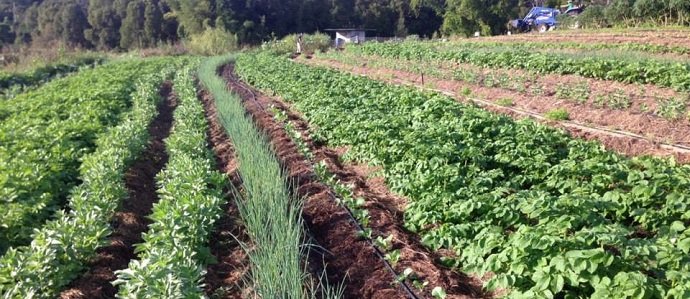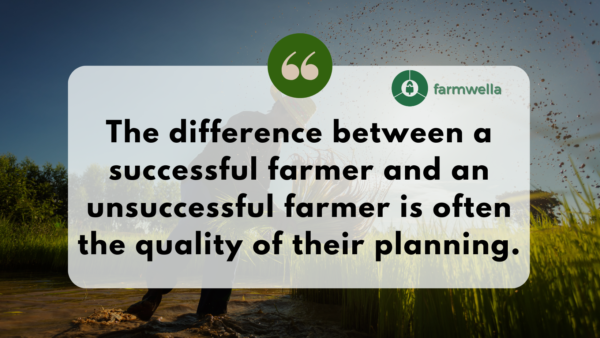
Crop rotation is one of the oldest and most effective agricultural techniques that farmers have been using for centuries to maximize their land’s potential.
It is surprising, but a lot of farmers, especially startup farmers, are actually unfamiliar with the practice, and some might not even know how to go about it on their own farms.
Basically, crop rotation just means planting different crops in the same area over a certain period of time.
If you’re curious about the benefits of crop rotation and why farmers should consider using it as part of their farming practices, you’re not alone. It is totally okay to wonder about the advantages of a new method before trying it out.
Let’s take a closer look at some of the benefits that farmers can reap by incorporating crop rotation into their farming practices. Not only can it help boost their yield, but it has a variety of other advantages that we’ll explore in this article.
What makes crop rotation worth considering as a farming practice?
1. Reduced impact of pests and diseases
When you plant the same crop in the same field year after year, pests and diseases that target that crop have a chance to build up in the soil. By rotating crops, you disrupt this buildup and reduce the risk of crop damage. Different crops can also attract different beneficial insects and microorganisms that can help control pests and diseases.
2. Improved Soil Health
Different crops have different nutrient requirements, and by rotating crops, you can ensure that the soil is not depleted of any one nutrient. For example, legume crops like beans and peas are able to fix nitrogen in the soil, which can be used by other crops in the rotation.
3. Increase in Crop Yield
Crop rotation can help maintain the health of the soil and prevent the buildup of harmful pests and diseases, ultimately leading to higher yields. This is because healthy soil is a prerequisite for healthy crops.
5 Ways to Maximize Farm Yield with Crop Rotation on Your Farm
1. Have a well-organized and efficient crop rotation plan.

Crop rotation is all about planning and designing a schedule that takes into consideration the types of crops you want to plant, when to plant and harvest them, and the soil type and fertility. If you get this right, you can maximize your crop yield and minimize the risk of pests and diseases.
So, when you are designing a crop rotation schedule, here are some things you should consider:
- Nutrient requirements of each crop
Different crops have different nutrient needs, so you want to create a rotation plan that allows the soil to recover and rebuild nutrients between plantings. For example, you might want to plant legumes like beans or peas to fix nitrogen in the soil, which can then be used by other crops in the rotation.
- Soil type and fertility
Some crops do well in specific soil types, while others require fertile soil. For instance, if you want to grow corn or tomatoes, you’ll need rich, fertile soil, whereas potatoes and carrots can grow in different soil types.
- Plant and harvest period
This will help you avoid planting or harvesting your crops at the wrong time, which can result in poor harvests. For instance, you can plant corn during the rainy season and follow it up with a crop like wheat during the dry season. This way, you’ll make the most of the weather conditions in your area and get better yields.
2. Rotate crops based on family
Crops such as tomatoes, peppers, and eggplants are often susceptible to the same pests and diseases. For example, early blight and bacterial spots are common diseases that affect plants in the nightshade family.
To avoid the build-up of pests and diseases in the soil, it is important to rotate crops within the same family. For instance, instead of planting tomatoes in the same field year after year, farmers can rotate them with legume crops like beans or peas.
Legume crops have the added benefit of fixing nitrogen in the soil, which can benefit other crops in the same field. Legumes like beans and peas have symbiotic relationships with nitrogen-fixing bacteria, which can help improve soil health and increase yields.
By rotating legumes with other crops, farmers can also reduce the need for synthetic fertilizers and promote sustainable farming practices.
3. Use Cover Crops
Cover crops are crops that are planted primarily to benefit the soil rather than for harvest. They can help improve soil fertility, prevent erosion, and suppress weeds. Some examples of cover crops that can be used include cowpeas, sunn hemp, and velvet beans.
Cowpeas, for instance, are a legume crop that can be used as a cover crop to improve soil fertility. They can fix nitrogen in the soil and provide a source of organic matter when they are incorporated into the soil. Sunn hemp is another cover crop that can be used to improve soil health.
It is a fast-growing plant that can suppress weeds and improve soil structure. Velvet beans, also known as mucuna, can help improve soil fertility and reduce soil erosion.
4. Consider the conditions of the farm
It is important to plan your crop rotation based on the unique conditions of your farm.
Consider the type of soil you have, as certain crops may thrive better in sandy versus clay soil.
Climate is also a big factor – crops that require lots of water may not do well in arid regions. And, don’t forget about available resources like irrigation systems and fertilizers.
Each farm is unique and requires a tailored approach to crop rotation. Take some time to assess your farm’s specific conditions and plan accordingly.
5. Monitor soil health and adjust rotations accordingly
Make sure to keep an eye on your soil health and adjust your rotations accordingly.
The key to healthy soil is understanding its nutrient levels, pH, and organic matter. Regularly testing your soil can help you make informed decisions about what crops to rotate and how to manage fertility.
For instance, if you find out that your soil’s organic matter is low, incorporating a cover crop or using animal manure can help build up soil health. Monitoring your soil health not only improves crop yield, but it also helps you maintain the long-term sustainability of your farm.
In a Nutshell
So there you have it, five ways to get the most out of crop rotation on your farm. Remember to plan ahead, incorporate legumes, rotate based on family, use cover crops, and monitor soil health. By implementing these practices, you can increase crop yield and sustainability on your farm. Additionally, if you’re interested in organic farming, crop rotation is a valuable strategy to consider. Start small and see the benefits for yourself!